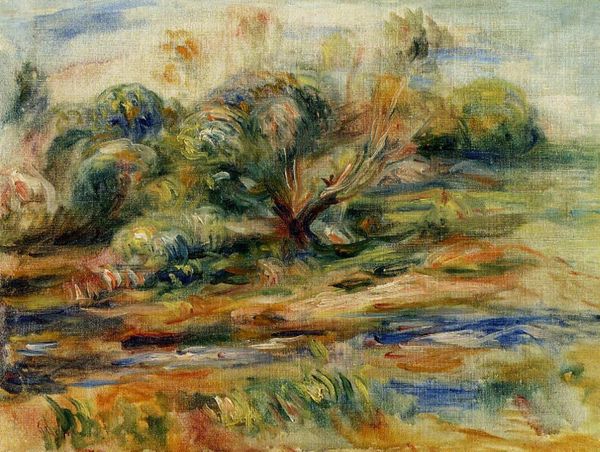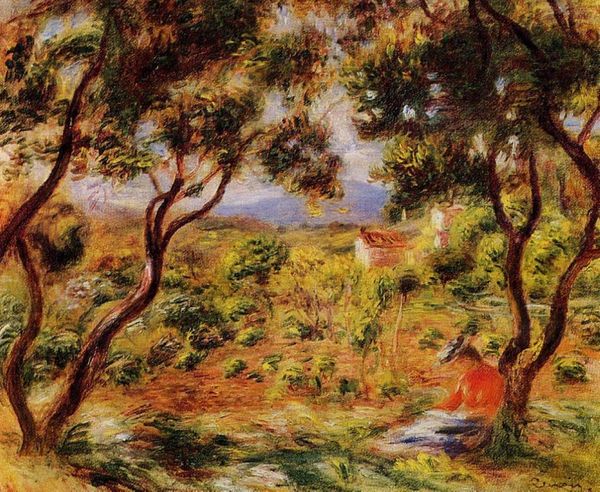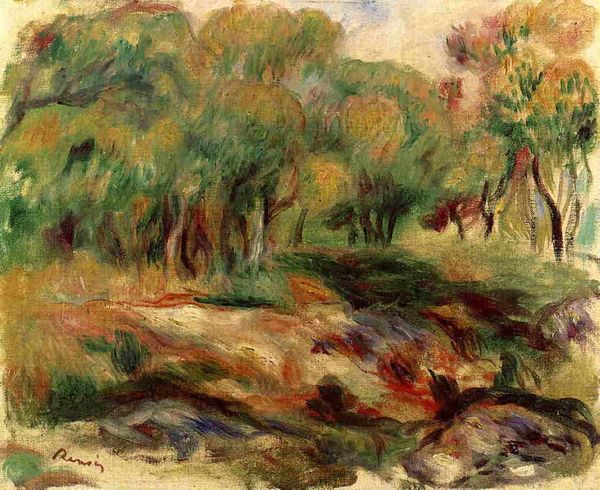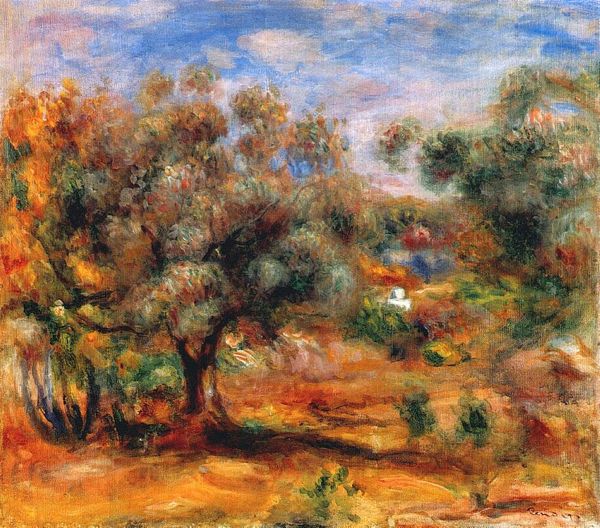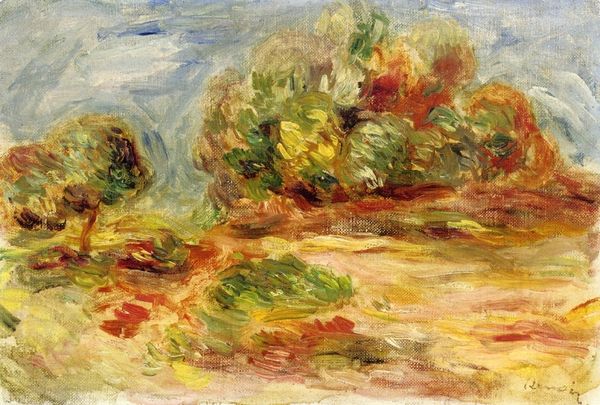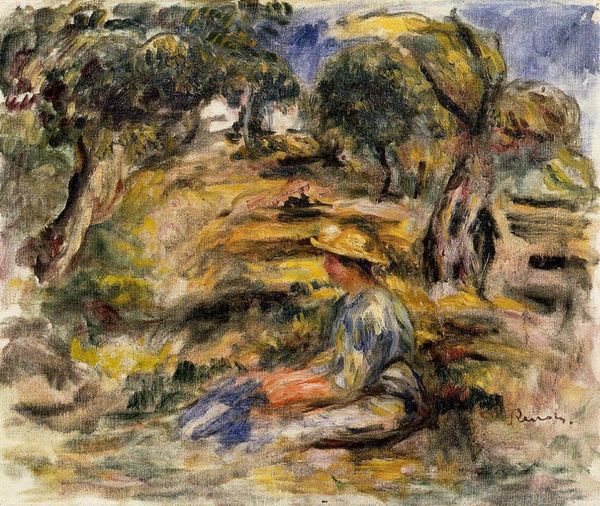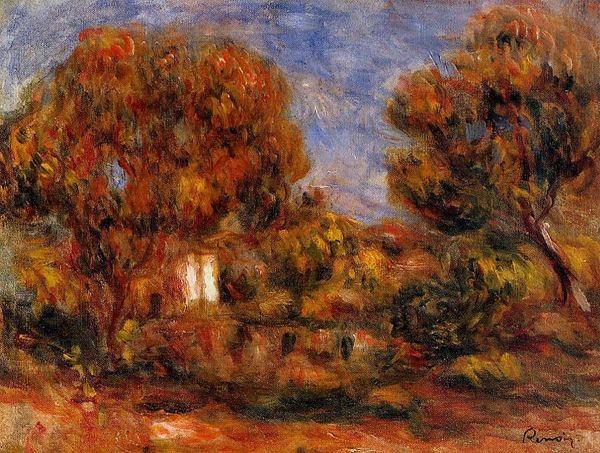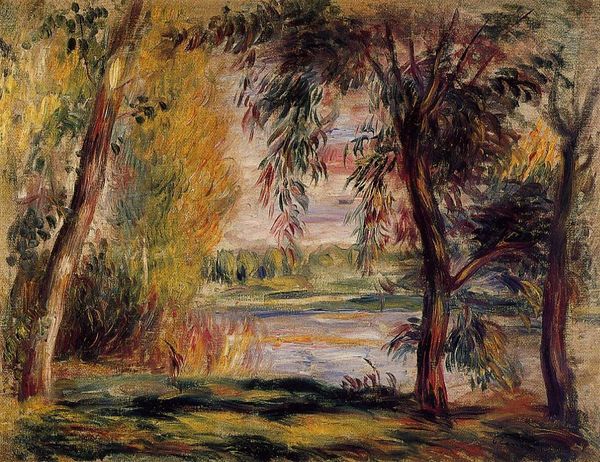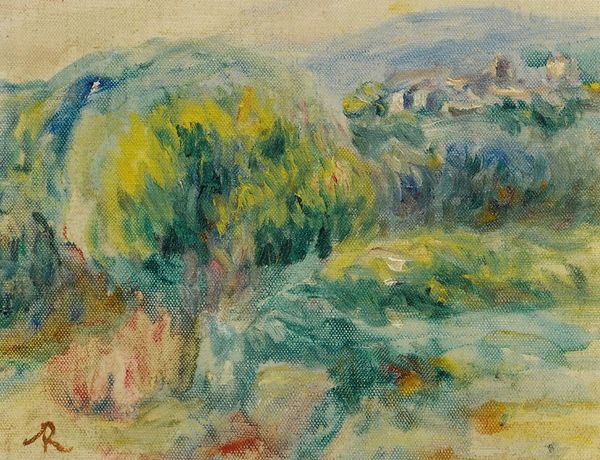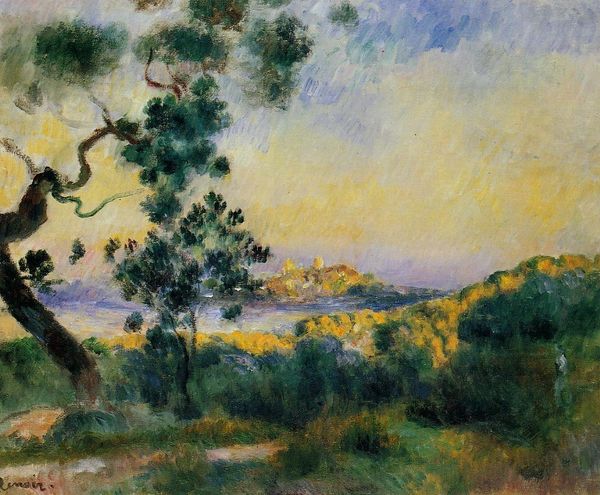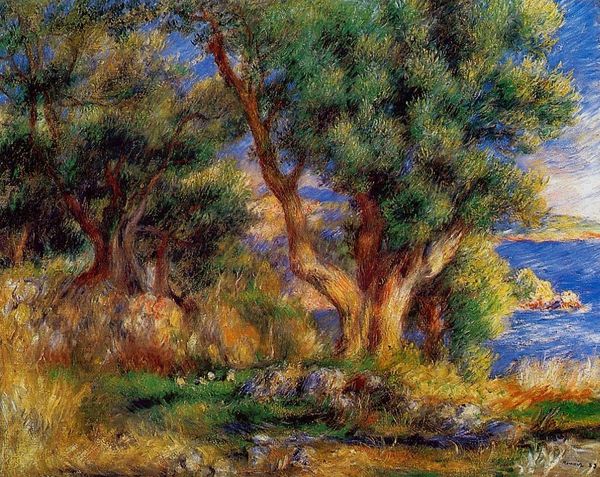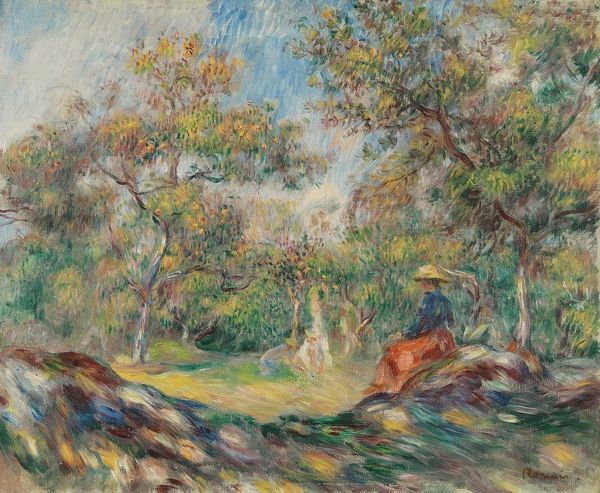
Copyright: Public domain
Art Historian: Here we have Pierre-Auguste Renoir’s “The Beal,” painted in 1905. Renoir, of course, is a central figure in the Impressionist movement, and this work is an example of his approach to landscape, using oil paint en plein-air. Artist: Oh, this pulls me right in. It’s soft, almost dreamlike. You can feel the warmth of the sun on your skin just looking at it. The composition feels both intimate and expansive at once. Art Historian: Note how the trees function almost as screens, partially obscuring and simultaneously revealing elements within the landscape. The houses and distant mountains, hazy in the background. It almost evokes a sense of idealized pastoral life, viewed through a veil. Artist: It's interesting you say that because to me it feels like a memory. The colors bleed into each other and nothing is sharply defined, which kind of mirrors how our minds soften the edges of moments past. Art Historian: Yes, and in this softening, in this reduction to pure sensory experience, isn't there also a deliberate removal of anything discordant or jarring? A kind of purification of landscape? Renoir doesn't present reality exactly; rather, a perfected, timeless version of it. It is absent any obvious symbols which invites us into its sensory world. Artist: Maybe, but it's that imperfect, almost clumsy application of paint that grabs me! He isn't trying to hide his hand here; the brushstrokes are vital and alive. The canvas seems less like a window to another place, and more a living breathing thing in itself, doesn't it? Like it could start rustling and vibrating like a gentle breeze. Art Historian: That's well observed. Perhaps, it's the paradox inherent in Impressionism itself—attempting to capture ephemeral moments while simultaneously imbuing them with a sense of timeless beauty. Artist: I guess at the end of the day it's up to the viewer. But what's so magical about this painting is that, whether or not you subscribe to an academic reading, you still cannot help feeling present in that world. Art Historian: Ultimately, Renoir has provided us with an intimate glimpse into a space that is as much emotional and psychological as it is topographical. Artist: Leaving you refreshed and renewed.
Comments
No comments
Be the first to comment and join the conversation on the ultimate creative platform.
